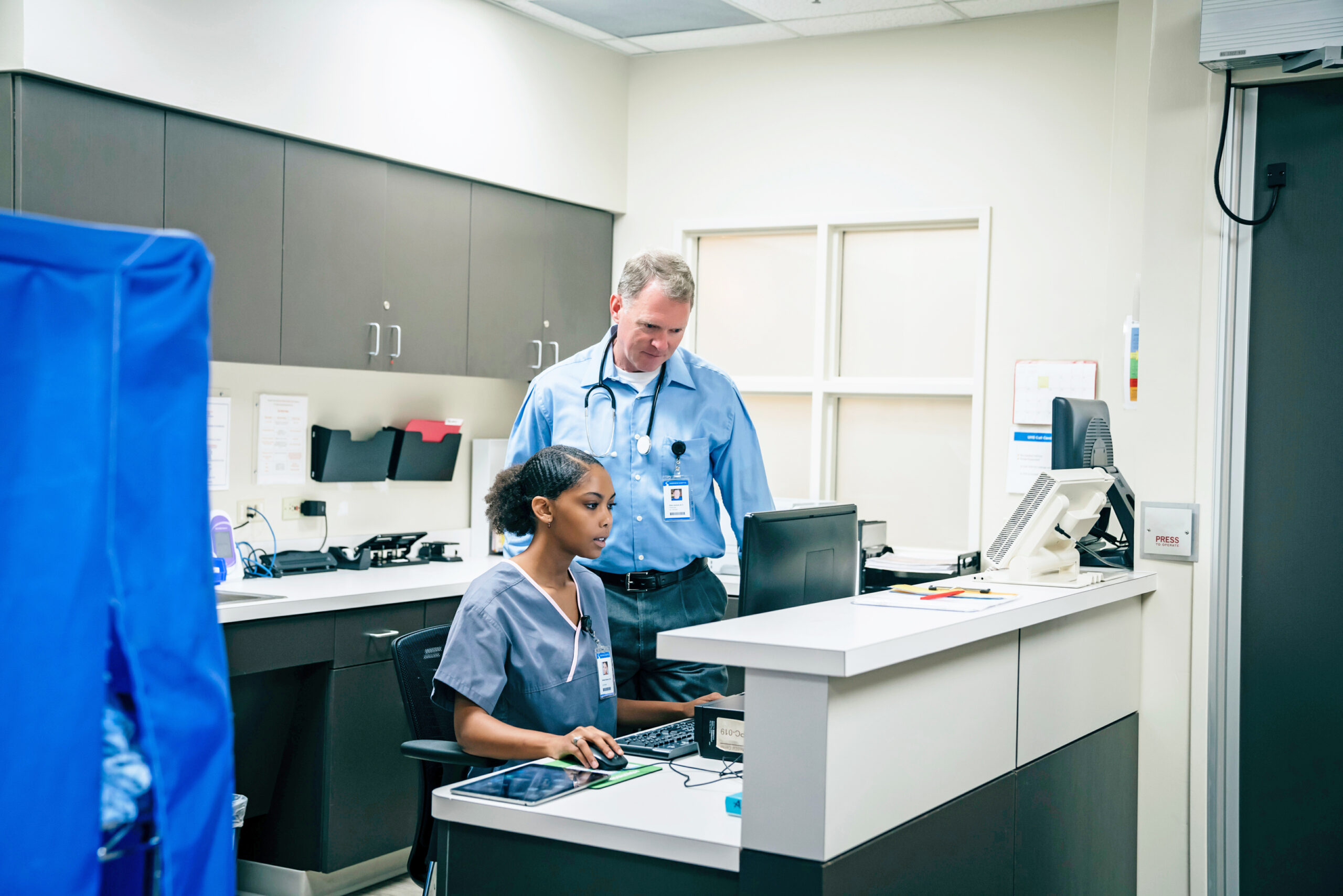As the country emerges from the worst of the pandemic, restaurants, local shops and national chains face staffing shortages. It’s an inconvenience to say the least, but this is just the tip of the iceberg as other sectors of the labor market are tightening in more crucial ways.
A healthcare labor shortage – one that existed long before the pandemic – is coming to its breaking point. While the media has largely covered the clinical labor shortage, those inside the world of healthcare know the shortage goes beyond physicians and nurses. Additionally, other challenges such as increasing costs and shrinking margins impact the patient experience and the bottom line, not to mention the fact they risk the ability of some hospitals, health systems and clinics to even remain open.
“What we have experienced over the last three years has been devastating, eye opening and a call to action to an industry that is a vital part of every community” said Todd Craghead, former VP of revenue cycle at Intermountain Healthcare. “We are now charged with finding a new way forward.”
In light of healthcare’s current challenges, we commissioned Censuswide to conduct a survey* to uncover today’s top priorities, concerns and trends among healthcare executives, with a particular focus on the revenue cycle management (RCM) labor shortage.
What we found is that if the last few years have been difficult for your health system, physician group or revenue cycle department, you are definitely not alone. Your peers have struggled as well, but many are forging an innovative path ahead.
Like charts and graphs?
Download the 2022 mid-year healthcare financial trends report. The report contains key takeaways of over 200 CFOs and VPs of revenue cycle.
Staff shortages abound
Nearly half of all respondents to our survey report they are experiencing a severe shortage in their organization´s RCM or billing department.
90% are currently experiencing a labor shortage in their RCM/billing department.
50% of their RCM/billing roles are currently vacant.
Due to the tight labor market, recruiters are having a harder time attracting top RCM talent – and even when they do, they often cannot afford to hire and train them the way they once could. Why? You can blame shrinking margins, caused in part by increased labor costs. Recent data from Kaufman Hall shows that among U.S. hospitals and health systems, labor costs have increased 37% per patient between 2019 and March 2022. This level of increase is unprecedented and almost impossible for health systems and physicians groups to keep up with.
Among the CFOs and RCM VPs who participated in our survey, 25% cited ‘increasing costs’ as their top concern, closely followed by ‘risk of recession’ and ‘shrinking margins.’
These are big problems that cannot be solved with small, cost-cutting initiatives. Instead, our survey data indicates healthcare leaders are rethinking how their organizations are structured, and more open to partnerships, automation and global delivery than ever before.
Strategic partnerships on the rise
Elevated patient expectations, a lack of staff and high costs are all contributing factors that have caused many organizations to consider outsourcing their RCM services. Our survey data showed that CFOs and RCM VPs said finding a strategic RCM partner was their top solution for the second half of 2022.
28% of healthcare CFOs and RCM VPs saying they are focused on finding a strategic RCM partner in the second half of 2022.
RCM partnerships bring scaled technology that can increase staff efficiency, which is especially important during a labor shortage. These partnerships can also help increase patient adoption of digital self-service tools that reduce costs and improve revenue capture. This type of patient-facing technology meets patients where they are by offering convenient technology most already use in other areas of their life.
Embracing automation
The combination of staffing shortages, increased revenue cycle and payer complexity and technological advancements has led the healthcare industry to a point where automation is now a necessity.
As patient volumes continue to rise post-pandemic and revenue cycle positions remain unfilled, administrative burdens are increasing. The cost of wasteful administrative burdens is estimated to cost the U.S. health care system over $265 billion annually. Even small steps to reduce this cost can make great strides. Intelligent automation can carry out many routine, time-consuming tasks including referrals, preregistration, authorizations and payment processing so staff can take on more complex tasks, thereby increasing staff efficiency.
33% of healthcare CFOs and RCM VPs are experiencing clinical deficiencies due to the labor shortage.
Another benefit to automation is the removal of simple – but costly – human error, which can cause billing mistakes and even lead to patient care delays, both of which negatively impact the patient experience.
48% have witnessed patient billing errors due to lack of experienced staff for coding, claims and reimbursement.
The value of global delivery
In order for RCM companies to keep their solutions flexible and scalable, some work may be supported through global delivery, in which certain parts of the revenue cycle occur in offices overseas. While this may have been an obstacle in the past, a majority of those surveyed have warmed to the idea of global delivery.
82% of finance and RCM leaders say their sentiment toward global delivery has become more favorable in the face of today’s labor shortages.
Many RCM companies use a global delivery model, however not all global delivery models are created equal. The right approach to RCM outsourcing includes full transparency, control and security.
The way to realize these is to choose an RCM partner that keeps global delivery within its own company, instead of an RCM partner who contracts with an outside company for overseas work. Keeping all RCM work within one company reduces security risks and maintains high compliance by holding all RCM team members to the same standards no matter where it’s associates and systems are located.
Key takeaways
- The healthcare industry needs a digital and cultural transformation.
- The shift taking place within the healthcare community and the takeaways from the survey show the industry is embracing a digital and cultural shift and is more open to outsourcing, automation and global delivery.
- Craghead says this transformation is the new way forward. “It’s about optimizing in every way: investing in people, processes and technology, and embracing an open mind regarding partnerships, employee reallocation and global delivery.”
Get more data-driven info.
If your healthcare organization is looking for an RCM partner, download our research brief conducted in partnership with The Health Management Academy.
*Survey Methodology:
R1 commissioned Censuswide to conduct an online survey of 205 CFOs and RCM VPs in the U.S. from large health systems and physician groups. The survey ran from June 9 to June 16, 2022, and the results have a confidence interval of approximately +/-7%. Censuswide abides by and employs members of the Market Research Society which is based on the ESOMAR principles.
Author Bio: Content written on behalf of R1 RCM.




